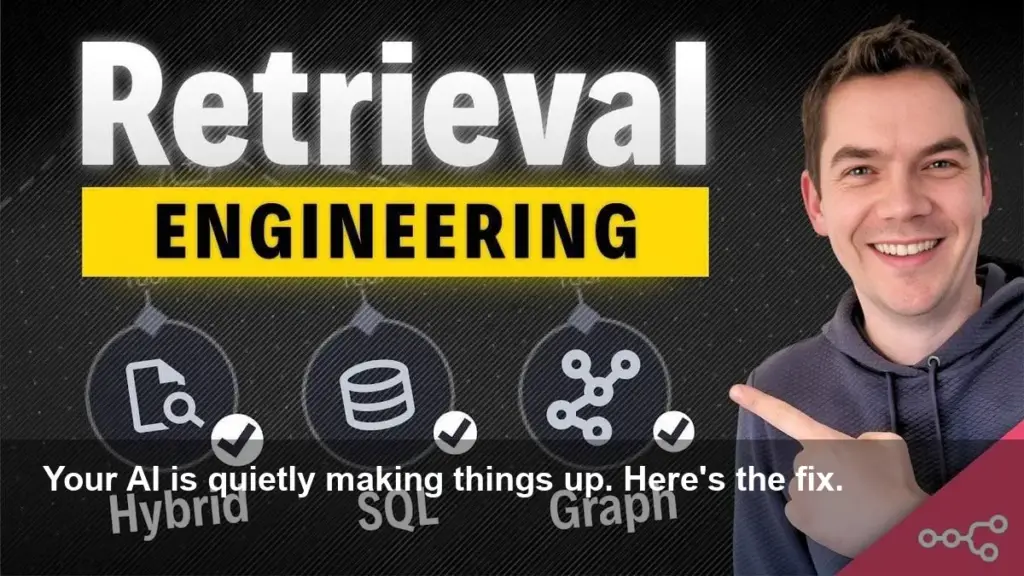- The Problem with Simple RAG: Basic Retrieval-Augmented Generation (RAG) systems often rely solely on vector search, leading to inaccuracies and ‘hallucinations’ when faced with complex queries.
- A Multi-Faceted Solution: The key to accuracy is a tailored retrieval plan, or ‘search blueprint,’ that intelligently combines keyword, graph, and SQL searches alongside vector search.
- Precision Through Specialization: This advanced approach uses keyword search for exact terms, graph databases for relationships, and direct SQL/API calls for real-time or highly structured data.
- Reduced Hallucinations: By retrieving the right information from the right source, this method dramatically improves the reliability and trustworthiness of answers from Large Language Models (LLMs).
The Hidden Flaw in Your AI Chatbot
In the race to build smarter AI, Retrieval-Augmented Generation (RAG) has emerged as a frontline solution to keep Large Language Models (LLMs) grounded in fact. By fetching relevant data before generating an answer, RAG aims to prevent the notorious ‘hallucinations’ that plague many AI systems. However, a critical flaw exists in most common implementations: an over-reliance on a single tool, vector search.
While powerful for understanding semantic similarity, vector search alone is not a silver bullet. It struggles with queries requiring exact matches, real-time data, or an understanding of complex relationships. This is where many RAG systems fail, providing answers that are plausible but incorrect. The solution isn’t to abandon RAG, but to evolve it.
Beyond a Single Search: Crafting a ‘Search Blueprint’
The next generation of RAG doesn’t rely on one retrieval method but orchestrates several in a sophisticated ‘search blueprint.’ This approach analyzes the user’s query to determine the best way to retrieve information, deploying different tools for different tasks.
H4: Hybrid Ranking: The Best of Both Worlds
Instead of choosing between traditional keyword search and modern vector search, a hybrid approach uses both. Keyword search excels at finding exact phrases, product IDs, or specific names that vector search might miss. By combining these results, the system can capture both literal and contextual matches, delivering far more relevant information to the LLM.
H4: Graph Search for Uncovering Relationships
What if a query is about the relationship between two entities? For example, “Which engineers worked on Project Apollo and also contributed to the database schema?” A vector search would likely fail. A graph database, however, is designed to map and query these relationships, providing precise answers that would otherwise be impossible to find.
H4: SQL and API Calls for Live, Structured Data
Many critical questions require up-to-the-minute information or data stored in structured databases. Queries like “How many units of product X are in stock right now?” or “What was the user’s last support ticket number?” are best answered by a direct SQL query or an API call. An advanced RAG system identifies these needs and pulls data directly from the source of truth, bypassing the potential for outdated or generalized vector results.
The Future is Accurate, Tailored Retrieval
By building a dynamic retrieval plan that can intelligently switch between or combine keyword, vector, graph, and direct data lookups, developers can finally address the root cause of many AI hallucinations. This tailored approach ensures the LLM is fed with precise, relevant, and timely context, transforming AI assistants from unreliable chatbots into expert systems you can actually trust.
Image Referance: https://www.geeky-gadgets.com/agent-search-blueprint/

